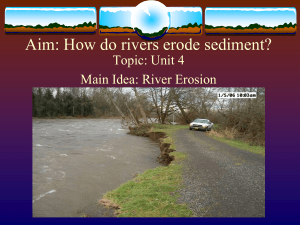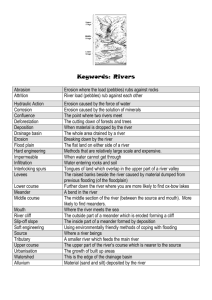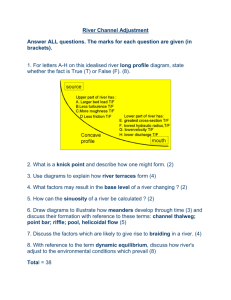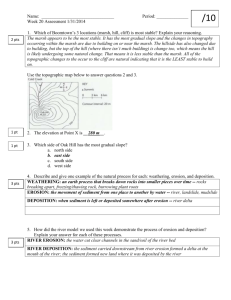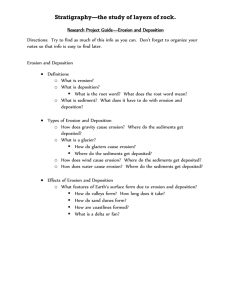River Erosion and Deposition
advertisement
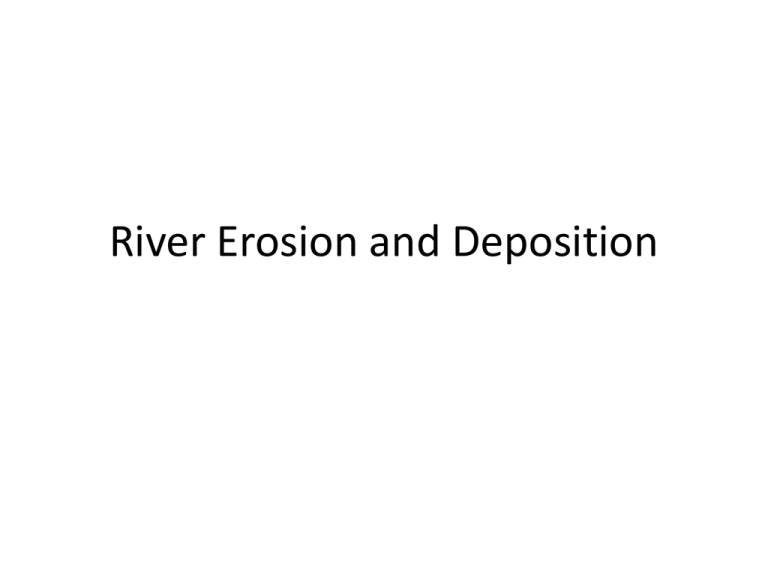
River Erosion and Deposition Rivers Shape the Land • Even the smallest stream has the ability to pick up objects • Erosion is the process by which fragments of soil and rock are broken off from the ground surface and carried away. • These fragments are carried away until they are eventually dropped off or deposited in a new location Rivers Shape the Land • Deposition is the process by which soil and rock are left behind • Rivers wear away land forms through erosion and build new landforms through deposition • Particles that are picked up and dropped off by moving water are called sediment. • Sediment that has not been dropped off is called a suspended load. Rate of Erosion/Deposition • A river’s speed affects its ability to wear away or erode the land • Faster speed = more energy • Slower speed = less energy • The more energy a river has the heavier the sediments it can move. • As a river slows it drops the heavier sediments first. What affects the speed of a river? • Steepness of its slope • Volume of water in the river – Increase in water = increase in speed • Shape of the river channel – As the water rubs against the sides and bottom it creates friction – In a narrow and shallow channel there is more friction so the water flows slowly What affects the speed of a river? • Friction between the water molecules and sides and bottom of river cause the water to move slower • The velocity of a stream is the greatest away from the bottom and sides • On the outside of curves Parts of a River • Headwaters- small streams that come together at the source of a river • Flood Plain – River created valley by erosion – Small obstacle cause a bend in the river – River flows faster on the outer edge of the curve causing erosion – River deposits sediment on the inner curve Parts of a River • The process of erosion and deposition creates a looping curve known as a meander. • Eventually the river may break through the meander and create a new channel. • The crescent shaped, cutoff body of water is called an oxbow lake. • Mouth – the point where a river flows into another body of water Parts of a River • As the river’s water reaches the larger body of water the speed of the rivers slows. • This causes sediments to deposit at the mouth of the river • The deposits build up forming what’s called a delta. River Erosion ABC Write • Is a river more likely to erode the land around its headwaters or at its mouth? Why?
